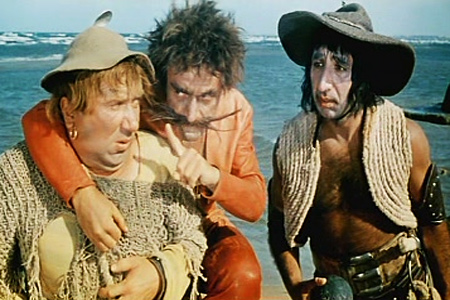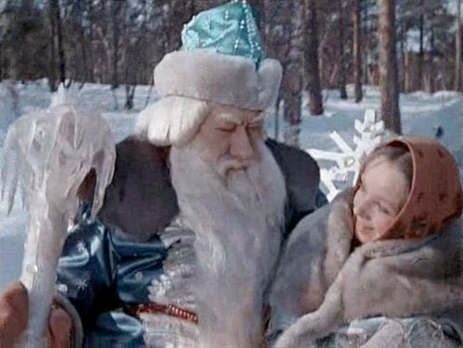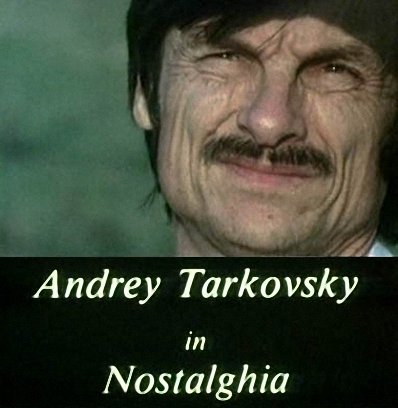 |
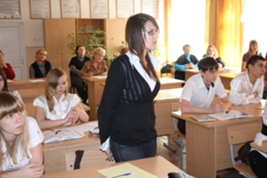   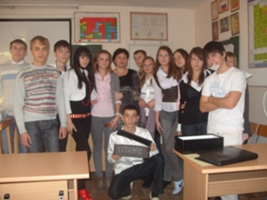   План-конспект урока по английскому языку в 11б классе по теме: «Кино» Учитель: Ударцева Елена Юрьевна Урок 2. Задачи:
Сопутствующая задача: развитие умения читать и аудировать с целью извлечения конкретной информации. Речевой материал: Рецептивный: лексический – screen, studio, silent, stunt man/woman, editor.
.Грамматический: для повторения придаточные определительные (Relative Clause).
Дидактический материал: Учебник : В.П. Кузовлев. Английский язык 10-11 класс Карточки с заданием. Ход урока I. Оргмомент (1-2мин.)
Цель: подготовить к работе речевой аппарат
T.:- How are you? P.:- Fine, thanks, and you? T.:- I am fine too, thanks. -Could you tell me the right time, please? P1,: I can’t tell you exactly, my watch may be a few minutes slow. P2.: I can. Five past eleven.
II. Речевая зарядка: ( 2 мин.) Цель: Показать связь с предыдущими уроками. T.: It’s time to begin our lesson. We speak about cinema today, don’t we? P1.: Yes, we do. T.: Do you remember who was the inventor of the cinema? P3.: The inventors of the cinema were French, not Americans. The Lumiere brothers invented the first film. T.: What were the first genres of American films? P4.: The first genres of American films were melodrama, western and comedy, later appeared adventure and historical film T.:And what do we know about cinematography in Russia?
III. Целеполагание: (2мин.) Цель: Привлечь учащихся к постановке цели. P5.:We know anything about it. T.: What is the task for the lesson? P6.: Russian cinematography and it’s history. IV. Практика в чтении и говорении.(15 мин.) Цель: Формирование коммуникативных навыков. Стр.187, упр.4.1) T.: What can you say about the history of Russian cinematography? (работа с лингвострановедческим справочником и раздаточным материалом.(Дифференцированная работа) P1.:The first film was demonstrated in May 1896 in St. Petersburg.. P2.: A.Khanzhonkov founded the first studio in Moscow. P3.: The first sound film appeared in the USSR, USA and Germany at the end of the 1920s. P4.: The first sound cinema house was opened in 1929 in Leningrad. P5.: A.Rou shot the well-known fairy tale “Morozko”.
V.Практика в ауировании: ( 10 мин.) ч Цель: Слушание с пониманием основного содержания с опорой на текст. T. :Listen to check if you are right. (p.345 Unit 6, ex. 4.2)
VI. Обратная связь.(5мин.)
Цель Показать уровень понимания прослушанного и прочитанного.
T.: Which films were made by the directors mentioned above? P1.: A.Konchalovski shot such films as “Uncle Vanya” and “Sibiriada”. P2.: Among N.S.Mikhalkov’s films are “Urga”, “Burnt in the sun”. P3.: A.A.Tarkovski’s best known films are “Solyaris” and “Stalker”.
VII. Итоги урока:(5 мин.) Цель: показать уровень достижения цели. T.: What can you say now about Russian cinematography, what can you add? Учащиеся говорят все, о чем узнали на уроке.
VIII.Домашнее задание: (1 мин.) P.187 ex.4.5) Write a story about the history of Russian film industry.
|
История кинематографа. От прошлого до наших дней. |
| Hollywood |
| First stars |
| verbs |
| Film corporations |
| adjectives |
| professions |
| Dates |
| genres |
| verbs |
Во время обсуждения фильма необходимо систематизировать знания учащихся по следующим вопросам:
- When did the first studio appear?
- What are the largest studios?
- What famous actors starred in the films?
- What genres were the first?
- What was the first coloured film?
- Today you have a chance to see one of the masterpieces with starring Charlie Chaplin “The Kids”. Be ready to speak about him and his acting. (Обсудить факты биографии актёра. Трагичность его судьбы)
- Who is your favourite actor or actress today? Why? What impressed you most of all?
As for me I am captivated by acting of such American actresses as Kate Winslet, her acting in “Titanik” was superb. Would you like to listen to a wonderful song from this film about romantic love, great love and great tragedy.
"Titanic" is also a movie about money and its evils. With fine irony, Cameron has spent more dollars than any other filmmaker to make a film that denounces the rich.
Listening comprehension.
Every night in my dreams
I see you, I feel you,
That is how I know you go on
Far across the distance
And spaces between us
You have come to show you go on
Near, far, wherever you are
I believe that the heart does go on
Once more you open the door
And you're here in my heart
And my heart will go on and on
Love can touch us one time
And last for a lifetime
And never let go till we're gone
Love was when I loved you
One true time I hold to
In my life we'll always go on
| 1 | dreams |
| 2 | feel |
| 3 | distance |
| 4 | us |
| 5 | Near |
| 6 | heart |
| 7 | open the door |
| 8 | can touch |
6. Ролевая игра
Imagine that you are the director of the film and the young actress. (учащиеся разбиваются на группы, юноши выбирают девушку на роль Розы, девушки выбирают юношу на роль Джека), определяют актёрский состав, режиссёр, оператор, сценарист, звукорежиссёр, ассистент режиссёра снимают сцену «На корме (атрибуты – шарф, вентилятор, камера).
Well done. Actors and actresses play the leading role in film making. Much depends upon the talent of the actor. Only few of them become stars. The greatest achievement in actor’s profession is getting Oscar (вручение «оскаров» главным актёрам)
7. Подведение итогов урока
You have worked hard and were a success. You have learnt about the history of cinematography and film making process, expressed your likes and dislikes of the films, spoke about your favourite actors and actresses. I give you good and excellent marks. The lesson is over, good bye!
Приложение к уроку
Name _____________________________________________________________
| Speaking | Listening | Words | Reading | Activitiy |
|
|
|
|
|
|
Урок 3 История мирового кинематографа.
Цель урока:
1) Обучающая - развитие способности к восприятию речи на слух, к общению, развитие памяти, внимания. Обучение монологической речи, с целью изложения найденной информации.
2) Развивающая - формирование способности к целеустремлённой работе для достижения совместных целей.
3) Воспитывающая – воспитание чувства сопричастности к мировой истории, к памятникам искусства, воспитание потребности в приобщении к мировой культуре.
Задачи:
1. Повторение употребления артиклей.
2. Развитие умения аудировать с целью извлечения новой информации.
Учебные пособия:
1) Компьютер
2) Видеофильм “Белоснежка и семь гномов”
3) Музыка к кинофильму “Ромео и Джульетта”
4) Мультимедиа.
5) Компьютерная программа “Профессор Хиггинс”
6) Видеофильм “Унесенные ветром”.
7) Слайдшоу (см. Приложение1)
План урока.
- Приветствие. Ознакомление учащихся с планом урока.
- Повторение грамматики: употребление артиклей.
- Фонетическая зарядка.
- Братья Люмьер – основатели кинематографа
- А.Ханжонков. Первая киностудия в России.
- Голливуд – империя кино.
- Актеры немого кино в США и России.
- Первый цветной фильм “Унесенные ветром”.
- Творчество К. Гейбла и В.Ли.
- Обмен мнениями о фильме.
- Уолт Дисней и его мультфильмы.
- Заполнение таблицы со словами по теме.
Ход урока.
Начало урока. Ознакомление с планом урока. Good afternoon! Today, boys and girls, we are having an unusual lesson. Computers, CDs, a video film will be assistants in our work. At the end of the lesson you’ll fill in the Word Web with the words devoted to the theme of our lesson.
The plan of our lesson is the following:
- Revision of the usage of the articles.
- The development of cinematography:
- brothers Lumiere
- cinematography in Russia
- Hollywood: (famous actors, silent and the first colour film “Gone With the Wind”)
- W. Disney’s cartoons.
I. Повторение употребления артиклей.
We begin our lesson with the revision of the usage of the articles. Answer my questions please.
- Do we use articles with names of persons?
- When do we use articles with the nouns “church”, “hospital”, “school”, “prison”?
Now take your seats at the computers and fulfill the tasks of the programme “Professor Higgins”.
Unit 71 (1), 71 (2); Unit 75 (2). (The work takes about 10-15 minutes).
II.Фонетическая зарядка.
We continue our work. Let’s pronounce the words, devoted to the theme. (Фонетическая зарядка настраивает уч-ся на тему урока). (Слайд № 1.)
III. Обучение аудированию и элементам монологической речи.
T: On the blackboard you see the words: “Cinema is the world’s most popular entertainment”. (Слайды № 2, № 3, № 4, которые сопровождаются музыкой, настраивающей на тему урока).
T: We are going to speak about the development of cinematography. The 20th century may be called the century of film making. Cinema and TV films have become an important part of our life.
Do you know how cinematography appeared? Whose portrait can you see on the blackboard?
(Слайд № 5. Фото братьев Люмьер)
P1: - The inventors of the cinema were the French, not Americans. Lumiere sent his assistants around the world to screen the films, shooting fresh materials. These films they developed themselves in an ordinary bucket. The Lumiere brothers invented the first film projector and motion-picture camera in 1895. That year in December they demonstrated the first three minutes film “Arrival of the Train”. In that film, a train came towards the camera. People ran out of the cinema, thinking it was a real train. Their film was demonstrated in May 1896 in St. Petersburg and in Moscow and later in Nizhni Novgorod.
(Слайд № 6. Портрет А. Ханжонкова).
T: 1906. Russia. What can you say about this period in the history of cinematography?
P2: - Russian cinematography began spreading since 1896. Its development is connected with the name of A. Khanzhonkov. He founded the first film studios. The studios began making shot feature films in 1907-1908, then they began making newsreels, ethnographic films and cartoons. The first Russian full-length film “The Defence of Sevastopol” was screened in 1911.
T: The development of cinematography brought to life the world cinema empire called Hollywood. (Слайд № 7. Голливуд).
P3: - About 100 years ago Los Angeles was a little city with orange forests and great weather. But one day in 1908 a group of people from Chicago came to Los Angeles to shoot a film. Since that day a lot of directors, producers, actors and workers have been coming to Los Angeles.
The number of the studios grew very quickly. They combined in large corporations. Now there are many big film companies in the USA: Warner Brothers, Paramount, Columbia Pictures, Universal and others. Silent and black -and – white films were made in Hollywood. It gave us a lot of famous actors and actresses.
T: That’s right. Thanks. Can you name famous actors and actresses, starred in silent films? The most well-known was C. Chaplin. (Слайд № 8. Чарли Чаплин и кадры из его фильмов).
P4: - C. Chaplin was born in 1889 and died in 1971. He was an American actor, producer, director and composer. His parents were actors too. In 1913 he began to star in the American company “Keystone” he was a comedian actor. His first comedy film “Making a living” was made in 1914, then “Catching in the Rain”. But he wanted to play real people. In the films “The Tramp”, “The Bank” we see lonely, unprotected people. There were tears and laugh in his film “The Kid”. C. Chaplin got two Oskar awards: in the twenties and in 1972. Silent films in which C. Chaplin starred, were aided by explanatory titles and music. Chaplin’s films have always been popular with the cinema-goers.
T: That’s very good. But I’d like to know if you have found some information about Russian stars of silent films. Look at the screen and say some words about these actors. (Слайд № 9. Портреты В.Холодной и В.Полонского)
P5: They were V.Kholodnaya and V. Polonsky. When you look at their portraits you see how beautiful they are. V. Polonsky was so handsome that he always played roles of heroes-lovers. A. Khanzhonkov invited him to star in his film “Natasha Rostova” in the part of Andrey Bolkonsky in 1915. He starred together with V. Kholodnaya.
In 1917 they appeared in the film “At the Fireplace”. The film was a great success.
T: (слайд № 10. Кадры из фильма “Унесенные ветром”.)
And at last in 1939 the first colour film was shot in Hollywood. It was “Gone with the Wind”. I’m sure you’ve seen the film. Speak about it.
P6: - The producer of the film was Victor Flemming. It’s a historical film and a melodrama. I’ve seen it with great interest. It is a great success all over the world. Great scenes of the War between the North and the South, landscapes make an unforgettable impression on the spectators. The main characters Skarlet O’ Khara and Rhett Butler were starred by V. Leigh and Klark Gable. This is a story not only about the war but also about two loving people and fighters at the same time. The picture got 8 Oskars.
T: – I’d like you to refresh some scenes of the film. (Ставится диск с фильмом. С 5-9 и 46-49 минуты). You see that the main actors became world-famous. Give some facts of their life. (Слайд № 11. В. Ли и К. Гейбл).
P7. – V. Leigh was born in 1913 and died in 1967. She was an English and American actress. In 1932 she studied in the Royal Academy of dramatic art in London. She appeared on the stage in 1935.
Klark Gable was born on the 1st of February in 1901, died in 1960. He tried to make his career in Hollywood. He acted hamsters and cowboys. In this film he created a brilliant character. The tragic death of his wife was a sad blow to him. He couldn’t find himself in the life and in the cinema.
IV. Практика в умении выражать свое отношение к фильму.
T: Now I want you to express your thoughts about the film. Look at the blackboard. Here you see a table. Match the left and the right sides of the table. You’ll get sentences which can help you. (Слайд № 12. Затем № 13, который дает правильные образцы предложений).
V. У. Дисней –великий мультипликатор.
T: Hollywood is famous not only by feature films but also by cartoons. They are so wonderful that even grown-ups see them with great pleasure. Can you imagine that famous “Snow White and the Seven Dwarfs” appeared in 1938? Who was the cartoons maker? (Слайд № 14-15. Уолт Дисней).
P8: - W. Disney (1901-1966) was a US film maker and animator. He was also famous as a creator of entertainment theme parks. He established his own studio in 1923. His first M. Mouse appeared in 1928 and the feature-length animated film “Snow White” in 1938. He achieved so much in his lifetime and won 48 Academy Awards. He was very hard-working, talented and motivated. The people who worked for him were part of his family, the Disney family. The cartoon requires a special talent. It has its own technique and form of stardom. (Отрывок из мультфильма “Белоснежка и семь гномов”).
P: Are the characters of the cartoon your favourite heroes? I think you’ve got great pleasure from the cartoon. We spoke much about cinema, films, film making process, cartoons. Now fulfill the Word Web, listening to the beautiful music from the film “Romeo and Juliet”. (Слайд 16. Кадры из фильма и звучит музыка
Слайд 17. Таблица для проверки).Учащиеся сдают листочки. Выставляются оценки.
|
|
|
|


